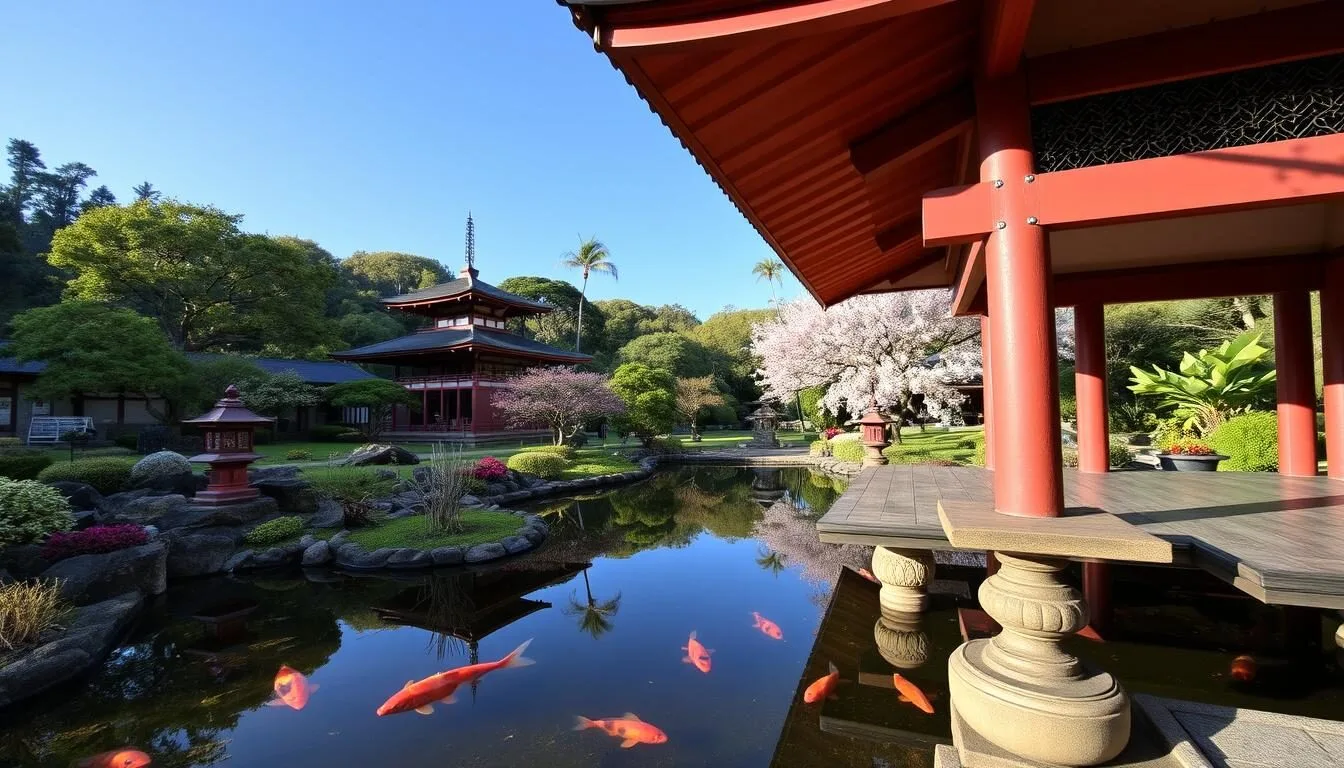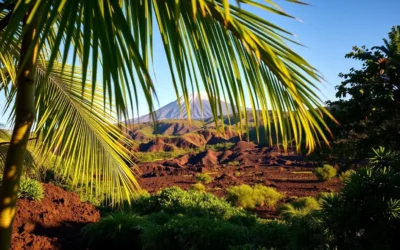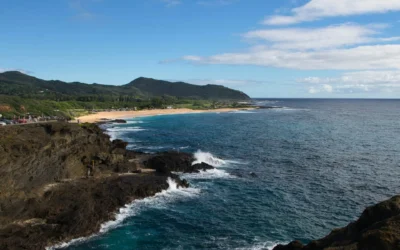✓ Accommodations ✓ Flights ✓ Rental Cars ✓ Tours & Activities
Discover the tranquil beauty of Liliʻuokalani Gardens, a 30-acre Japanese oasis in Hilo, Hawaii. This serene park is a must-visit attraction on the Big Island, offering a peaceful retreat from the hustle and bustle of tourist areas.
Liliʻuokalani Gardens is not only a stunning example of traditional Japanese garden design but also a significant cultural landmark. The garden features beautifully maintained landscapes, including stone lanterns, small bridges, and koi ponds, creating a tranquil atmosphere that showcases the beauty of Japanese culture.
Key Highlights:
- Explore the 30-acre Japanese landscape garden, the largest authentic Japanese garden outside of Japan.
- Enjoy the serene atmosphere and scenic views of Hilo Bay and Moku Ola (Coconut Island).
- Experience the cultural significance and natural beauty of this beloved Hilo landmark.
As you plan your visit, you’ll find that Liliʻuokalani Gardens is an ideal destination for those seeking a peaceful and culturally enriching experience. With its unique blend of Japanese and Hawaiian heritage, this garden is a true gem on the Big Island.
The History and Cultural Significance of Liliʻuokalani Gardens
The story of Liliʻuokalani Gardens begins with a generous donation by Queen Liliʻuokalani herself. In 1907, she gifted a five-acre fishpond, Waihonu, in Hilo for the creation of a public park, laying the foundation for what would become a beloved and historically rich garden.
Queen Liliʻuokalani’s Vision and Legacy
As Hawaii’s last reigning monarch, Queen Liliʻuokalani’s vision for the gardens was not just about creating a beautiful space but also about honoring the cultural heritage of her people. Her donation set the stage for the development of the gardens into a significant cultural landmark on the island.
Japanese Immigrant Contributions to the Gardens
Between 1917 and 1919, the Hawaii Territorial Legislature expanded the grounds to 17 acres, transforming it into the beautiful Japanese gardens we see today. This expansion was a tribute to the first Japanese immigrants who played a vital role in Hawaii’s sugar industry, reflecting a traditional Japanese aesthetic.
| Year | Event | Significance |
|---|---|---|
| 1907 | Queen Liliʻuokalani donates Waihonu fishpond | Foundation for Liliʻuokalani Gardens |
| 1917-1919 | Hawaii Territorial Legislature expands the grounds | Development into Japanese gardens |
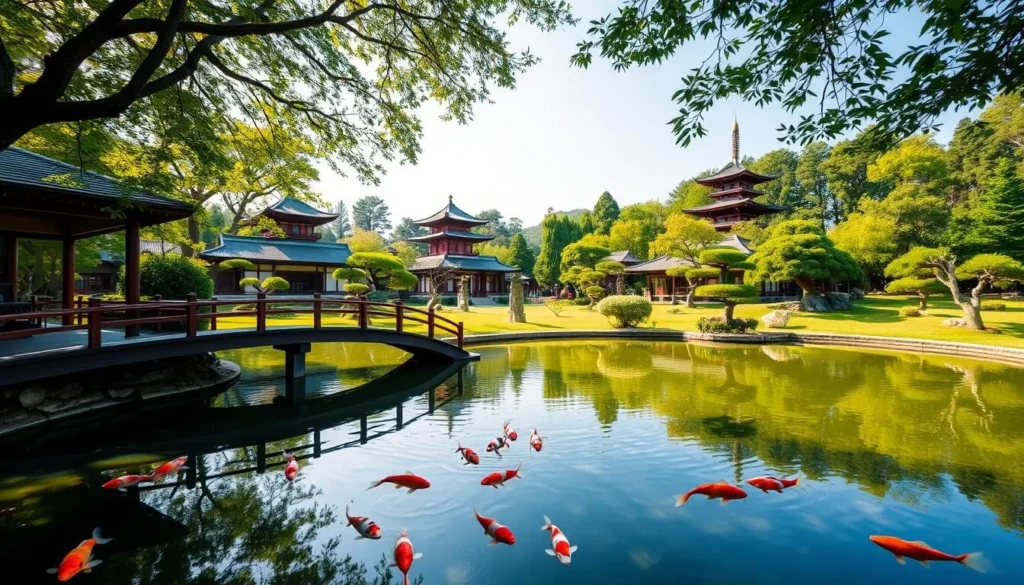
Exploring the Features of Liliʻuokalani Gardens
The beauty of Liliʻuokalani Gardens lies in its meticulous design, featuring a variety of traditional Japanese elements that create a harmonious balance with nature. As you explore the gardens, you’ll discover a range of stunning landscapes and authentic features.
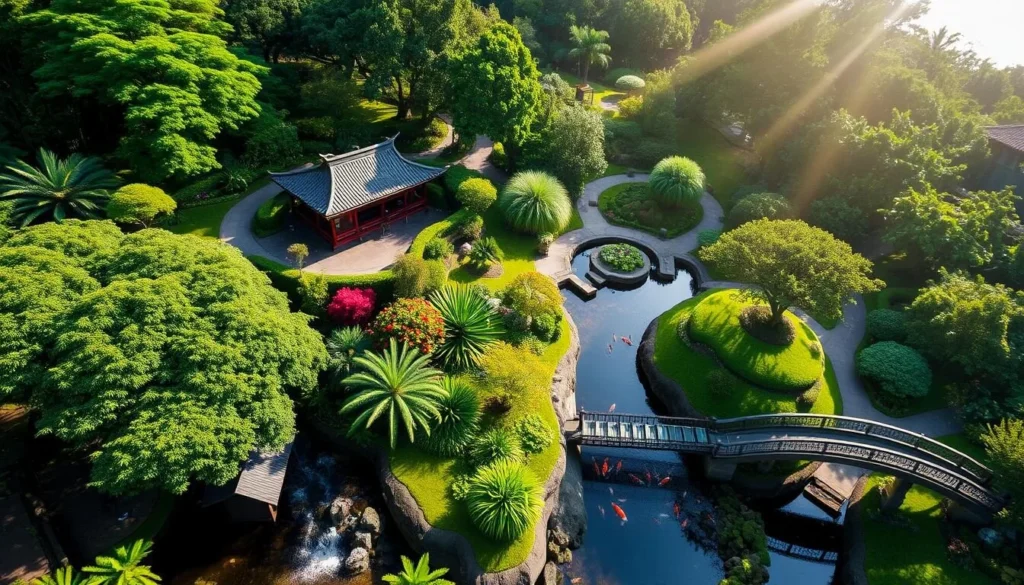
Traditional Japanese Garden Elements
Liliʻuokalani Gardens is celebrated for its authentic Edo-style design, making it the largest Japanese garden outside of Japan. You can wander through the meticulously designed landscape, appreciating the traditional Japanese garden elements that create a serene atmosphere. The gardens feature a mix of tropical Hawaiian species and traditional Japanese plants, all thriving under the canopy of majestic trees.
Bridges, Pagodas, and Stone Lanterns
As you stroll through the gardens, you’ll come across elegant bridges that span across tranquil koi ponds, offering perfect vantage points to observe the colorful fish. The gardens are also adorned with ornate pagodas and stone lanterns, each serving both decorative and symbolic purposes in traditional Japanese garden design.
Koi Ponds and Water Features
The gardens feature various water features, including the historic Waihonu Pond, which creates a sense of serenity and serves as a focal point for the garden’s design. You can enjoy the peaceful atmosphere while exploring the winding paths that guide you through the diverse plantings and garden features.
By appreciating the traditional torii gates and Japanese teahouse, you can enhance your understanding of the authentic Edo-style design that makes Liliʻuokalani Gardens so unique.
Liliʻuokalani Gardens, The Big Island, Hawaii: Visitor Information
Before you visit Liliʻuokalani Gardens, here’s what you need to know to make the most of your trip to this beautiful Japanese garden on the Big Island, Hawaii.
Opening Hours and Admission Details
Liliʻuokalani Gardens is open 24 hours daily, allowing you to plan your visit at a time that suits you best. Admission is free, making it an accessible attraction for visitors of all budgets. You can enjoy the serene environment without worrying about the cost.
Location and Accessibility
The gardens are located at 189 Lihiwai St #151 in Hilo, conveniently near downtown and other attractions in the area. The park is designed to be wheelchair-accessible, ensuring that all visitors can enjoy the beautiful landscape.
Available Facilities
While the gardens are a public park and offer basic facilities, some visitors suggest that additional informational signage about the plants and history would enhance the experience. Nonetheless, the self-guided nature of the visit allows you to explore at your own pace.
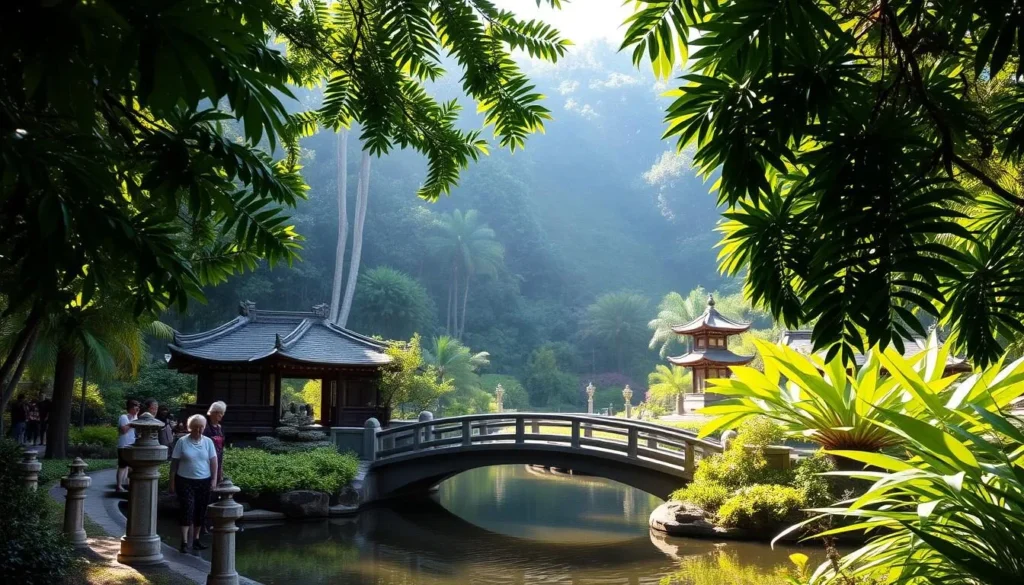
Making the Most of Your Visit
To experience the full beauty of Lili’uokalani Gardens, planning your visit at the right time is crucial. The gardens offer a serene and picturesque landscape that can be enjoyed in various ways.
Best Times to Visit the Gardens
Visiting the gardens during the early morning hours is ideal, as the soft light creates magical views across the landscape, perfect for appreciating the garden’s tranquil beauty. With fewer crowds, you can leisurely explore the gardens and take in the peaceful atmosphere.
Photography Opportunities
The gardens are a photographer’s paradise, with stunning views of Hilo Bay and picturesque spots like arched bridges reflected in koi ponds and ornate pagodas framed by lush vegetation. Bring your camera to capture these moments and enjoy the beauty of the surroundings.
Nearby Attractions to Combine with Your Visit
After exploring the gardens, consider visiting nearby Coconut Island (Moku Ola), which offers swimming areas and beautiful views back toward the shoreline. You can also combine your visit with trips to other nearby attractions like the Pacific Tsunami Museum or the East Hawaii Cultural Center to make the most of your travel time in Hilo.
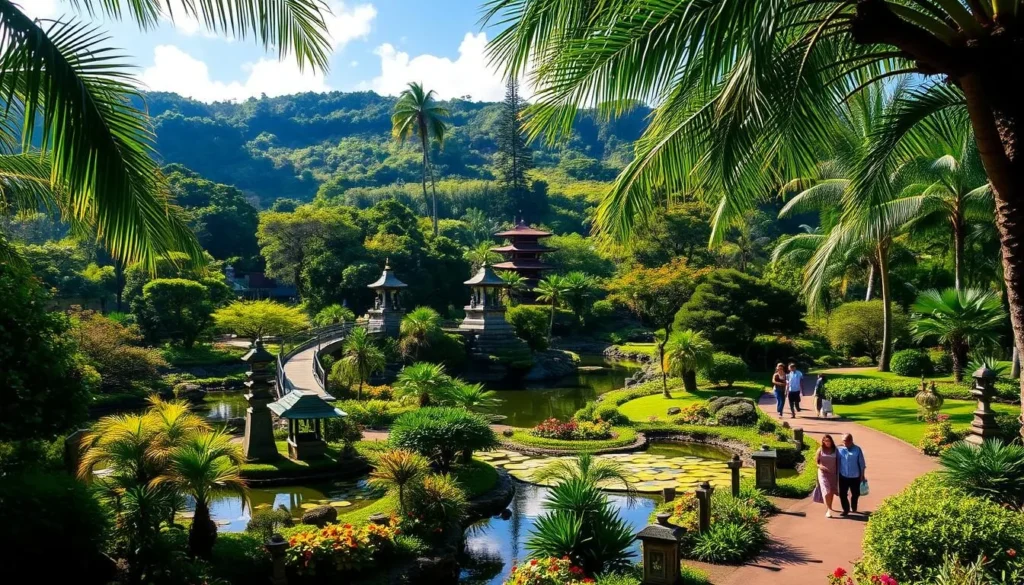
Experience the Tranquility of Hawaii’s Japanese Garden
Liliʻuokalani Gardens offers a tranquil escape, blending Hawaiian and Japanese cultures beautifully. As you stroll through this serene oasis on the Big Island, you’ll discover a meticulously manicured Japanese landscape surrounded by sprawling banyan trees along Banyan Drive, known as the “Hilo Walk of Fame.”
The garden is not just a peaceful retreat but also a cultural bridge, preserving Japanese garden traditions while honoring Hawaii’s last queen. You can experience the changing moods of the garden throughout the day, from misty mornings to golden afternoons when stone lanterns cast long shadows across the lawns.
As you explore the gardens overlooking Hilo Bay, notice the careful placement of plants and trees, creating a sense of discovery. The park is a popular spot for visitors who come to enjoy morning walks, picnics, and photography, making it an integral part of the community.
The above is subject to change.
Check back often to TRAVEL.COM for the latest travel tips and deals.
